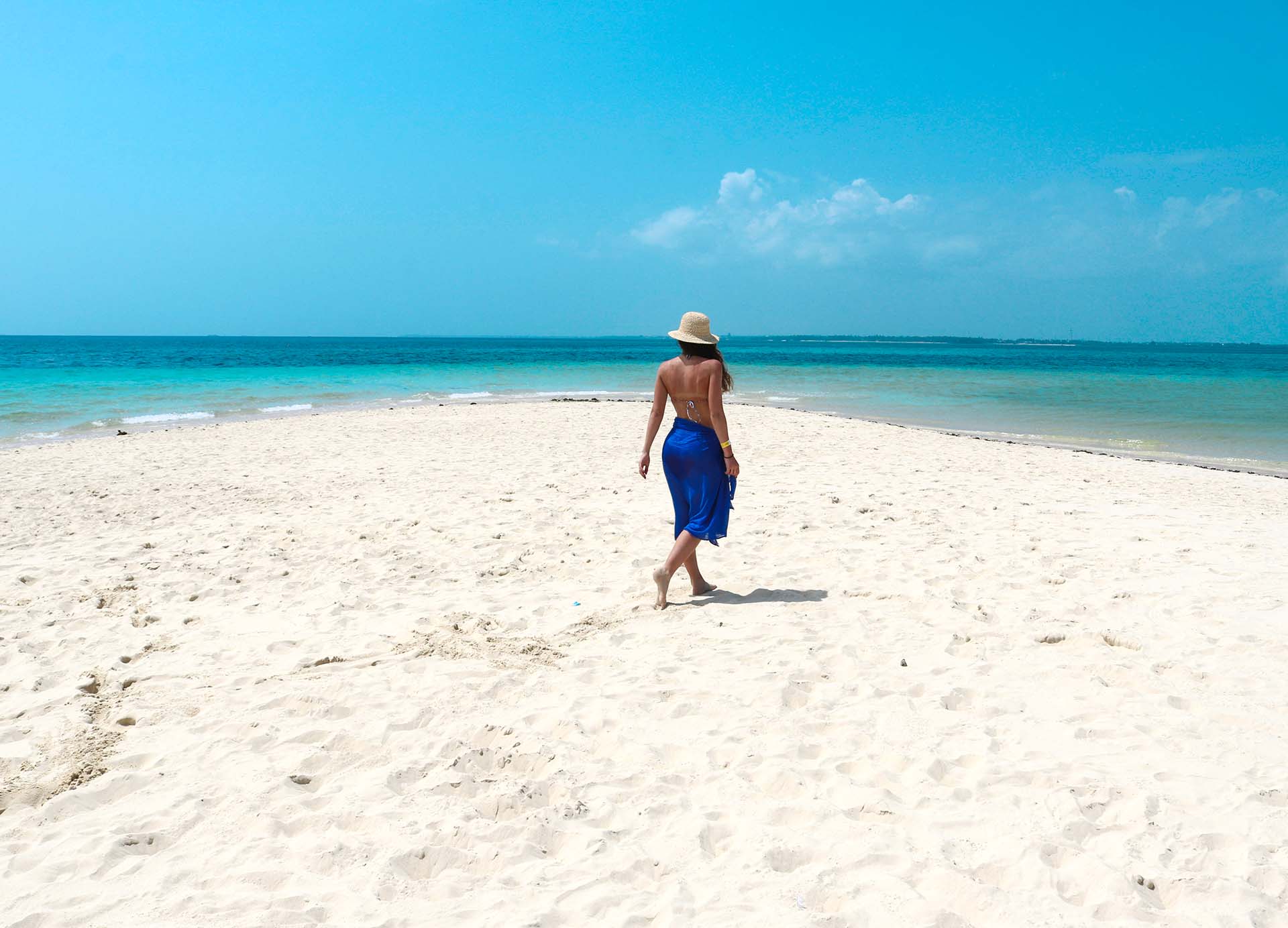Zanzibar’s hidden beaches including Makunduchi Beach, Pingwe Beach, Chuini Beach, plus secret spots like Kizimkazi’s southern coves, Michamvi Pingwe’s moonlit bay, Uroa’s tidal sandbar, and Matemwe’s northern lagoon offer solitude, local charm, and pristine waters. They’re best reached with tide checks, local transport, and an adventurous spirit.
Quick Answer
Zanzibar’s hidden beaches including Makunduchi Beach, Pingwe Beach, Chuini Beach, plus secret spots like Kizimkazi’s southern coves, Michamvi Pingwe’s moonlit bay, Uroa’s tidal sandbar, and Matemwe’s northern lagoon offer solitude, local charm, and pristine waters. They’re best reached with tide checks, local transport, and an adventurous spirit.
The sun is just lifting over the Indian Ocean, brushing the water in gold. Dhows drift silently offshore, their sails catching the early breeze. On the sand, there are no loungers, no music, no crowds just the hush of the tide curling in and out.
Most travelers never see these places. They land in Stone Town, head straight to the resorts, and never stray beyond the well-trodden paths. But Zanzibar rewards the curious, the ones who follow fishermen’s tracks through coral rubble, who ask locals where they go to watch the sunrise, who wander where the tarmac road turns to sand and the tourist maps end.
These hidden shores aren’t accidents of geography; they’re sanctuaries. Places where village life continues as it has for generations, where fishing boats launch at dawn regardless of hotel occupancy rates, where the rhythm of the tide still dictates the day’s activities.
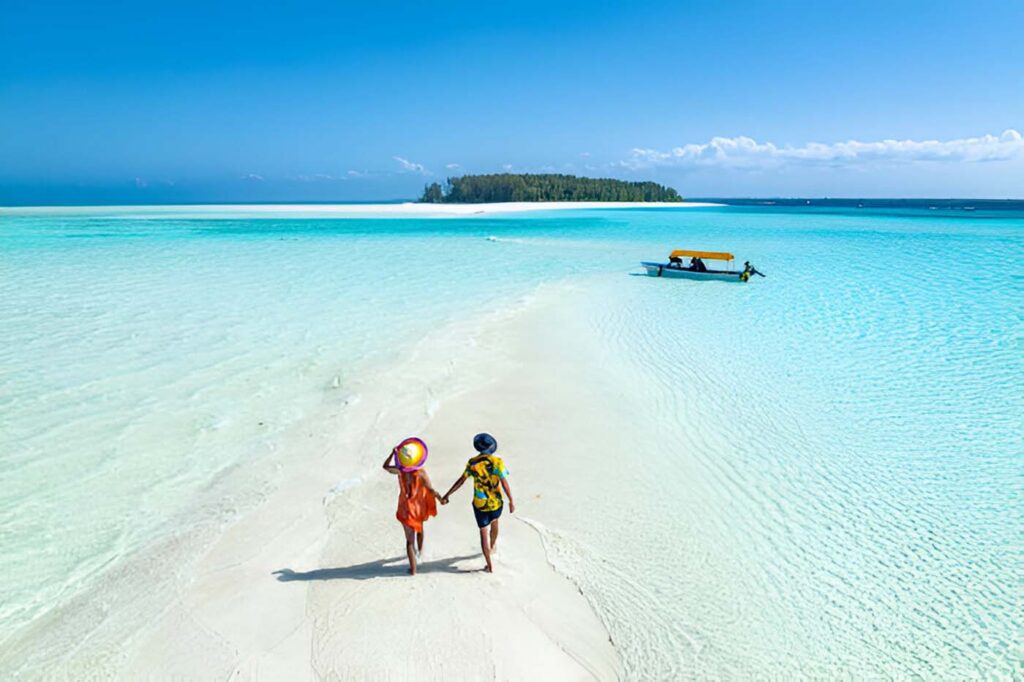
Travel to Alkebulan Note Hidden beaches aren’t just landscapes they’re living chapters in Zanzibar’s story. When you visit, you’re stepping into daily rhythms that predate tourism by centuries. Walk lightly, greet warmly, and listen more than you speak.
Zanzibar’s Most Secluded Beaches
1. Makunduchi Beach – Fishing Village Serenity
On Zanzibar’s southeastern coast, where the tourist trail ends and authentic island life begins, Makunduchi Beach stretches like a forgotten dream. This isn’t a beach that will appear on resort brochures or Instagram feeds. Instead, it’s where local fishermen mend nets under swaying palms and children chase crabs through tide pools while their mothers sort the morning catch.
The sand here feels different underfoot, unmarked by tourist footprints or beach loungers. Gentle waves lap the shore in a rhythm that has remained unchanged for centuries, while traditional dhows dot the horizon like prayer flags against the infinite blue. The nearby fishing villages provide a window into Swahili coastal culture that exists far from the influence of international tourism.
Quick Facts
- Best Time: Early morning and late afternoon
- Getting There: 45 minutes from Stone Town via Makunduchi village
- Cultural Note: Ask permission before photographing fishermen or their boats
2. Pingwe Beach – Hidden Gem with Famous Views
While The Rock Restaurant has put Pingwe on tourist maps, venture beyond the restaurant’s vicinity and you’ll discover why locals have treasured this stretch of coast for generations. Pingwe Beach extends both north and south of the famous coral outcrop, offering sand and gentle waves in areas where tour groups rarely venture.
The tidal pools here are particularly spectacular, filled with colorful sea anemones, hermit crabs, and small reef fish that become trapped as the tide recedes. Local women harvest seaweed in these shallows, their colorful kangas creating moving patterns against the turquoise water as they work in the traditional rhythm of the tides.
Quick Facts
- Best Time: Low tide for tidal pool exploration
- Getting There: 50 minutes from Stone Town via Michamvi Peninsula
- Bonus: Combine with a meal at The Rock Restaurant for sunset
3. Chuini Beach – Historical Romance by the Sea
Northwest of Stone Town, where mangrove channels meet the open ocean, Chuini Beach offers a unique blend of natural beauty and historical intrigue. The crumbling walls of Chuini Palace, built in the 1890s by a wealthy Arab merchant, frame this peaceful bay where history and nature intertwine in extraordinary ways.
The beach itself curves around a protected inlet where mangrove trees create natural shade and birds nest in the twisted roots. At high tide, the water is perfect for swimming, while low tide reveals fascinating tidal flats where shore birds feed and local children collect shells. The palace ruins add an almost mystical quality to sunset, when golden light filters through arched doorways that once hosted elaborate parties.
Quick Facts
- Best Time: High tide for swimming, sunset for photography
- Getting There: 20 minutes from Stone Town via Chuini village
- Historical Note: The palace was built by Saleh bin Haramil, a wealthy merchant
Chuini Palace represents one of Zanzibar’s most romantic ruins, where 19th-century merchant princes once entertained guests with views across the channel to the mainland.
Kizimkazi draws crowds for dolphin tours, but venture past the main jetty where the tour boats cluster, and you’ll discover small coves carved between coral cliffs. These natural amphitheaters change character with the tide. At low tide, the reef reveals intricate tidal pools filled with starfish, sea cucumbers, and hermit crabs scurrying between coral formations. At high tide, each cove transforms into a natural swimming pool with water so clear you can count individual shells on the sandy bottom.
The fishermen here still use ngalawa, outrigger canoes carved from single mango trees. Watch them return in the early morning, their boats heavy with kingfish and snapper, and you’ll understand why these waters have sustained communities for generations.
Quick Facts
- Best Time: Sunrise, June – October
- Getting There: 1.5 hours from Stone Town via Kizimkazi Road
- Essential: Reef shoes for coral walking
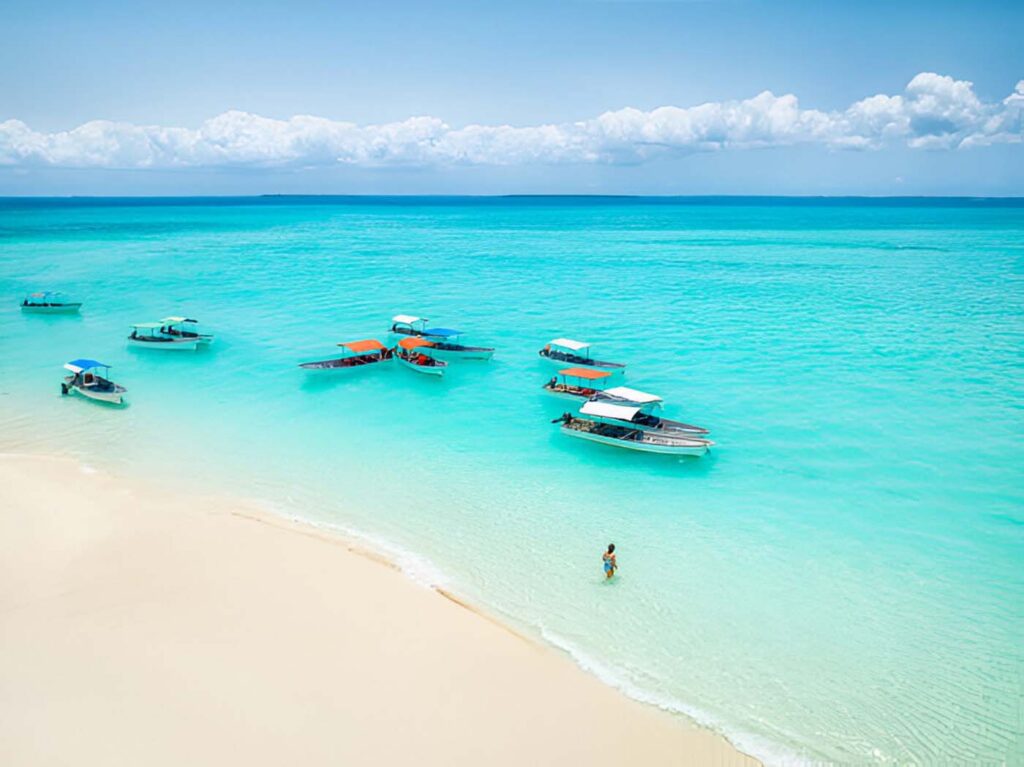
4. Kizimkazi’s Southern Coves
Kizimkazi draws crowds for dolphin tours, but venture past the main jetty where the tour boats cluster, and you’ll discover small coves carved between coral cliffs. These natural amphitheaters change character with the tide. At low tide, the reef reveals intricate tidal pools filled with starfish, sea cucumbers, and hermit crabs scurrying between coral formations. At high tide, each cove transforms into a natural swimming pool with water so clear you can count individual shells on the sandy bottom.
The fishermen here still use ngalawa, outrigger canoes carved from single mango trees. Watch them return in the early morning, their boats heavy with kingfish and snapper, and you’ll understand why these waters have sustained communities for generations.
Quick Facts
- Best Time: Sunrise, June – October
- Getting There: 1.5 hours from Stone Town via Kizimkazi Road
- Essential: Reef shoes for coral walking
Don’t forget to pack proper reef-safe sunscreen and reef shoes in your Zanzibar packing list for exploring these coral environments safely.
5. Michamvi Pingwe’s Moonlight Bay
North of The Rock restaurant, beyond the Instagram crowds and sunset cocktails, lies a crescent bay protected by a natural coral breakwater. By day, the lagoon is shallow and warm — perfect for children or nervous swimmers. But the real magic happens after dark. Under a full moon, when the tourist buses have returned to Stone Town, this lagoon transforms into liquid silver.
Local fishermen call it “Bahari ya Mwezi” (the Moon Sea). They say the best fishing happens on moonless nights, when the reef fish venture into the shallows. But for visitors, the moonlit nights offer something different: a chance to wade through water that sparkles with each step.
Photo Tip: For moonlit shots, bring a tripod and shoot during the hour after moonrise. Low tide reveals the full curve of the bay and creates leading lines in the wet sand.
For complete transportation options to reach these remote spots, check our comprehensive guide on how to get to Zanzibar including domestic flights and ferry connections.
6. Uroa’s Hidden Sandbar
When the morning tide retreats, something magical emerges from Uroa’s waters: a sandbar that stretches nearly half a kilometer into the ocean, creating a temporary island surrounded by mirror-like shallows. This isn’t marked on tourist maps, and many resorts don’t mention it, but local children have been playing here for generations.
The sandbar appears roughly two hours after low tide and remains walkable for about four hours. During this window, you can wade out to what feels like the middle of the ocean, with water rarely deeper than your knees. Bring a mask — the surrounding shallows are home to rays, small reef sharks, and schools of tropical fish that seem unafraid of visitors.
Travel to Alkebulan Note Ask fishermen for tide timings; they read the ocean’s rhythm better than any printed chart and often know about temporary channels or deeper areas to avoid. Solo travelers particularly benefit from building relationships with local fishermen who can provide insider knowledge about the best times to visit secluded spots.
Planning your budget? Our detailed Zanzibar travel costs guide breaks down expenses for transportation, activities, and dining to help you explore these hidden beaches affordably.
7. Fumba’s Mangrove Edge
Where the mangrove forest meets the sea, narrow beaches emerge like secrets between the twisted roots. These aren’t your typical palm-fringed stretches of sand, but they offer something rarer: absolute tranquility. The mangroves create a natural windbreak, so even when the trade winds are howling elsewhere, these small beaches remain calm.
At sunset, when the tide is high and the mangrove channels fill with water, the entire landscape becomes a mirror. Dhows from the nearby villages glide silently between the roots, their hulls dark against water that reflects the sky. This is where many Menai Bay dhow safaris make their sunset stop, but if you time it right, you can have these beaches to yourself.
Quick Facts
- Best Time: Sunset, year-round
- Access: 45 minutes from Stone Town via Fumba village
- Bonus: Often spot dolphins feeding in the channels
The mangrove ecosystem here is part of the larger Menai Bay Conservation Area, Tanzania’s largest marine protected area, which covers over 470 square kilometers of diverse marine habitats.
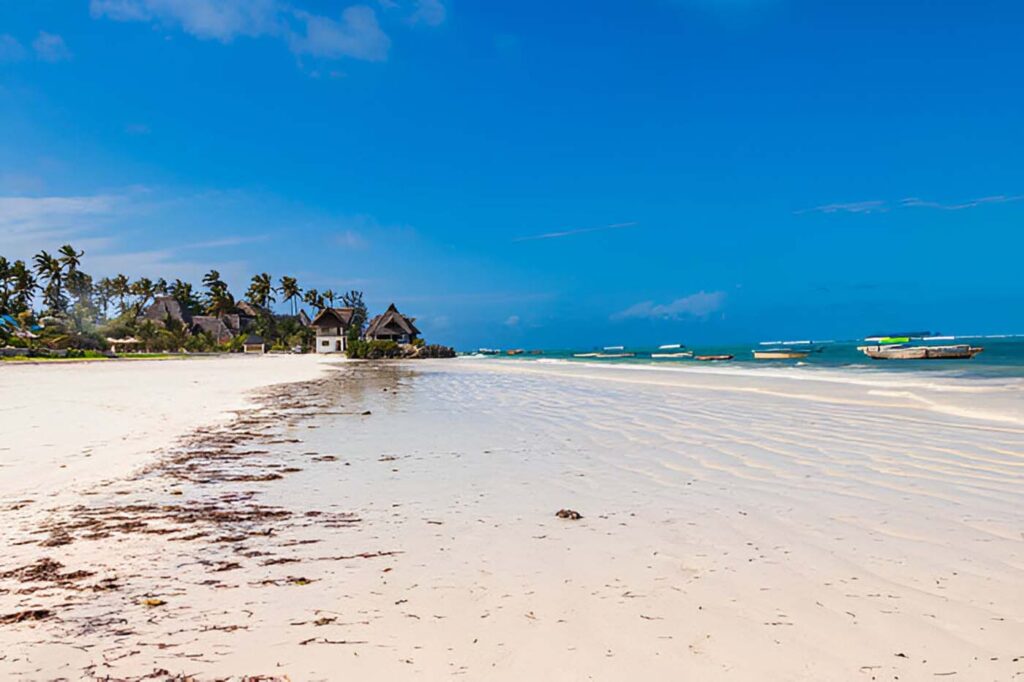
8. Matemwe’s Northern Lagoon
Beyond Matemwe’s main beach, where the luxury resorts end and the fishing village begins, a coral shelf creates a natural lagoon that stays calm even during the windy season. This is turtle territory – green and hawksbill turtles nest here seasonally, and you might spot them grazing on seagrass in the shallows.
The water here has an unusual clarity, even by Zanzibar standards. Local guides say it’s because the coral formation creates a natural filtration system, constantly cycling clean ocean water through the lagoon. Whatever the reason, snorkeling here feels like swimming in an aquarium.
Photo Tip: Launch a kayak at sunrise for glassy water reflections and empty horizons. The shallow lagoon creates perfect conditions for aerial shots if you have a drone.
Turtle conservation efforts in this area are supported by local communities working with organizations like the Sea Sense marine conservation program, which monitors nesting sites and educates fishermen about sustainable practices.
Additional Hidden Treasures
9. Kendwa’s Sunset Cove: Just south of Kendwa’s party beach lies a quieter bay that faces directly west. While crowds gather at the main beach bars, this cove offers unobstructed sunset views with only the sound of waves and perhaps a few local fishermen.
10. Chumbe Island Reef Sanctuary: This marine protected area limits daily visitors, ensuring pristine coral gardens and abundant fish life. The beaches here feel untouched, surrounded by some of the Indian Ocean’s healthiest reefs. Chumbe Island operates as a private nature reserve with award-winning coral reef conservation programs.
11. Bwejuu’s South End: Morning mist rises from tide pools while fishing boats prepare for the day. This is exploration territory, bring curiosity and comfortable shoes for rock-hopping.
12. Paje’s Secret South Lagoon: Hidden behind a grove of coconut palms, these still waters at sunrise are perfect for stand-up paddleboarding before the wind picks up.
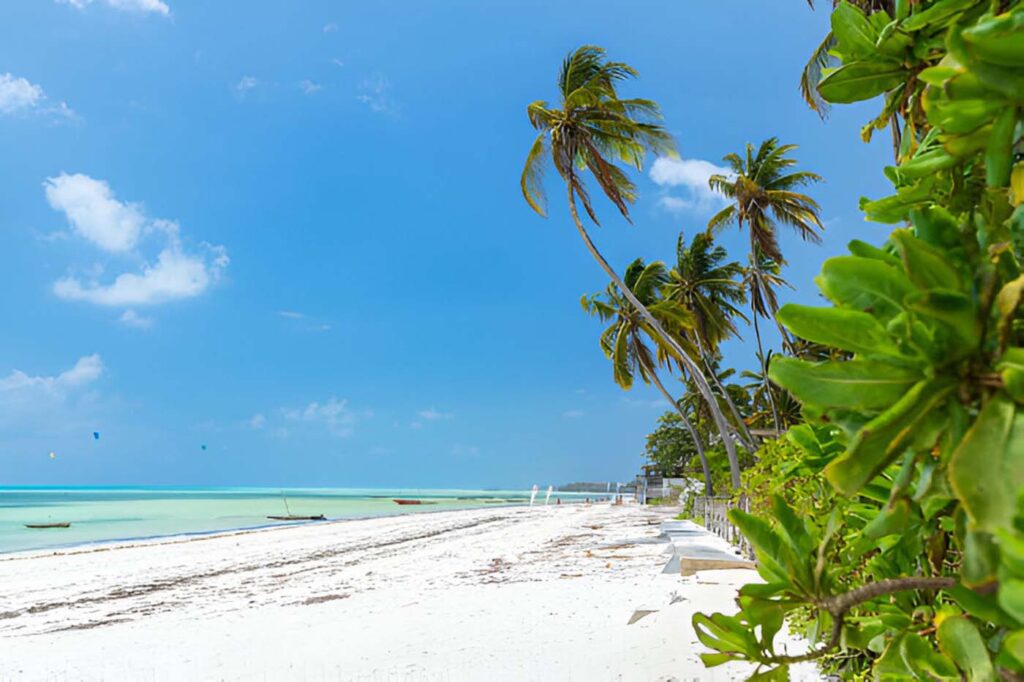
13. Jambiani’s Whispering Beach: A southern stretch where the wind drops, and the only sound is the ocean. Known locally for seaweed farms visible at low tide.
14. Kigomani’s Cliff-Edge Cove: North of Matemwe, small paths lead down from coral cliffs to isolated sandy pockets.
Seasonal & Tide Guide
Understanding the best time to visit Zanzibar for hidden beach exploration depends on both weather patterns and tidal conditions:
June – October: Dry season with cool trade winds. Morning low tides reveal sandbars and tide pools. Perfect for Uroa Sandbar, Matemwe Lagoon, and Kizimkazi Coves. The southeast monsoon winds create ideal conditions for kite surfing on the eastern beaches.
November: Short rains begin. Variable tides create different daily opportunities. Fumba Mangroves and Kendwa Cove stay accessible.
December – February: Hot and humid with calm conditions. Evening low tides extend beach time. Ideal for Michamvi Moonlight Bay and Paje Lagoon.
March – May: Long rains can limit access to some beaches, but protected areas like Chumbe Island and Chuini Coral Point remain beautiful.
Photography & Safety Guide
Golden Hour Magic: East-facing beaches deliver sunrise drama; west-facing shores offer sunset fire.
Tide Timing: Low tide exposes tide pools and creates leading lines in wet sand. High tide brings clearer water for swimming photography.
Essential Gear: Polarizing filter for water clarity, drone for coral reef patterns, waterproof housing for underwater shots.
Safety First: Always check tides before heading to sandbars. Respect private village land some beach paths cross community areas. Solo travelers should stick to daylight visits in remote locations and consider our solo travel safety tips when exploring off-the-beaten-path destinations.
Travel to Alkebulan Note Respect flows both directions. Dress modestly when passing through fishing villages, learn basic Swahili greetings, and always ask permission before photographing people or their boats. Understanding local customs enhances your experience and builds genuine connections with coastal communities.
Final Word
Zanzibar’s famous beaches have earned their reputation, but the island’s real magic lives in its hidden shores. These places don’t appear on resort brochures or tour company maps. They reveal themselves slowly, to visitors who have the patience to explore beyond the obvious, who understand that the best experiences often lie where the road narrows and the crowds fade away.
Go where the fishermen go. Follow the tide. Let Zanzibar show you its secrets.

